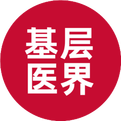
Chuanxiong (Ligusticum chuanxiong) is the dried rhizome of the plant in the Umbelliferae family. It is a commonly used traditional Chinese medicine (TCM) that is pungent, warm, and aromatic. It has the ability to disperse and move, reaching the top of the head and descending to the blood sea, making it effective for promoting blood circulation and removing blood stasis, suitable for various conditions caused by blood stasis.
Treatment of Various Cardiovascular and Cerebrovascular Diseases
Chuanxiong, with its pungent and dispersing properties, is warm and can drive away cold, promoting blood circulation and relieving pain. It is effective for conditions affecting the head and uterus, and it opens up stagnation. It belongs to the pericardium meridian, promoting blood circulation and relieving pain, and is one of the most commonly used medicines for treating coronary heart disease, angina pectoris, myocardial ischemia, and myocardial infarction.
-
Combined with Dan Shen (Salvia miltiorrhiza), Gui Zhi (Cinnamon Twig), Yuan Hu (Corydalis), Tao Ren (Peach Kernel), Hong Hua (Safflower), Su He Xiang (Liquidambaris), and Tan Xiang (Sandalwood) to treat chest pain and angina caused by blood stasis in the heart vessels.
-
Combined with Gua Lou (Trichosanthes), Xie Bai (Garlic Chives), Ban Xia (Pinellia), and Huang Jiu (Yellow Wine) to treat chest pain caused by phlegm and blood stasis, with symptoms of chest fullness and pain radiating to the back, back pain, shortness of breath, inability to lie down comfortably, dark tongue or stasis spots, and a white greasy tongue coating with a slow pulse.
-
Combined with Dan Shen, Shan Zha (Hawthorn), Tao Ren, Hong Hua to treat coronary heart disease and myocardial ischemia; combined with Huang Qi (Astragalus), Chi Shao (Red Peony), Dang Gui (Angelica), and Di Long (Earthworm) to treat stroke.
-
Combined with Chai Hu (Bupleurum), Bai Shao (White Peony), Yuan Hu, and Xiang Fu (Cyperus) to treat chest and hypochondriac distension and pain caused by liver qi stagnation; combined with Tao Ren, Hong Hua, Chai Hu, and Chi Shao to treat stabbing pain in the chest and hypochondrium.
Currently, TCM patent medicines based on Chuanxiong, such as Su Xiao Jiu Xin Wan, Compound Dan Shen Pian, Chuanxiong Zine, and Xiong Ju Shang Qing Wan, are abundantly available in the market, safe and effective, and convenient to use, allowing for syndrome differentiation.
Treatment of Various Gynecological Diseases
This herb warms, promotes blood circulation, relieves pain, and can descend to the uterus, making it a key medicine for treating women’s menstrual disorders, dysmenorrhea, amenorrhea, infertility, and postpartum complications. Combined with Dang Gui and Yi Mu Cao (Motherwort) to treat menstrual irregularities; combined with Hong Hua and Yuan Hu to treat dysmenorrhea caused by uterine stasis; combined with Ai Ye (Mugwort) and Pao Jiang (Dried Ginger) to treat dysmenorrhea and infertility due to cold in the uterus; combined with Tao Ren, Dang Gui, and Pao Jiang to treat postpartum complications.
“For headaches, Chuanxiong must be used”
There is a famous saying in TCM: “For headaches, Chuanxiong must be used.” Headaches are one of the most common clinical symptoms. They can appear as a standalone condition or as a symptom accompanying other diseases.
Many factors can cause headaches, including external pathogens and internal injuries. External pathogens can include wind-heat, wind-cold, and wind-dampness.
Internal injuries can be due to deficiency or excess. Deficiency can be due to qi deficiency or blood deficiency.
Excess can be due to liver fire rising, liver yang hyperactivity, phlegm turbidity headache, or blood stasis headache; it can also be seen in migraine.
Although there are many causes of headaches, they can generally be summarized by the basic pathophysiological mechanisms of “no flow leads to pain” and “no nourishment leads to pain.”
This herb is combined with Qiang Huo (Notopterygium), Xi Xin (Asarum), and Bai Zhi (Angelica Dahurica) to treat wind-cold headaches; combined with Ju Hua (Chrysanthemum), Jiang Can (Silkworm), and Sheng Shi Gao (Gypsum) to treat wind-heat headaches; combined with Chai Hu, Bai Shao, and Yu Li Ren (Bush Cherry Seed) to treat migraines; combined with Dang Gui and Bai Shao to treat blood deficiency headaches; combined with Chi Shao and She Xiang (Musk) to treat blood stasis headaches; combined with Huang Qi and Dang Shen (Codonopsis) to treat qi deficiency headaches; combined with Zhi Zi (Gardenia) and Long Dan Cao (Gentian) to treat liver fire headaches; combined with Shi Jue Ming (Abalone Shell) and Zhen Zhu Mu (Mother of Pearl) to treat headaches caused by liver yang hyperactivity; combined with Cang Zhu (Atractylodes) and Ban Xia to treat phlegm turbidity headaches;
The common dosage of this herb is 6-10 grams. Ancient texts warn that using a large amount may lead to “warming dryness injuring yin,” but from decades of clinical practice, I have found that as long as it is properly combined, even a dosage of 30 grams does not have this issue, suggesting that there may be some misunderstanding.
This herb is indeed an excellent choice for promoting circulation to the head and is a key medicine for relieving pain, with dosage adjusted according to the severity of symptoms and compatibility.
Although Chuanxiong is beneficial, there are some contraindications in clinical use. Patients with hypertensive headaches, brain tumor headaches, liver fire headaches, and those with yin deficiency and excess heat should avoid it. Patients with blood deficiency and fluid damage should use it in combination with blood tonifying and yin nourishing herbs, and pregnant women should use it with caution.
Disclaimer
1. This article only represents the author’s personal views and is not related to this platform.
2. If there is any infringement, please contact the editor for timely deletion!

